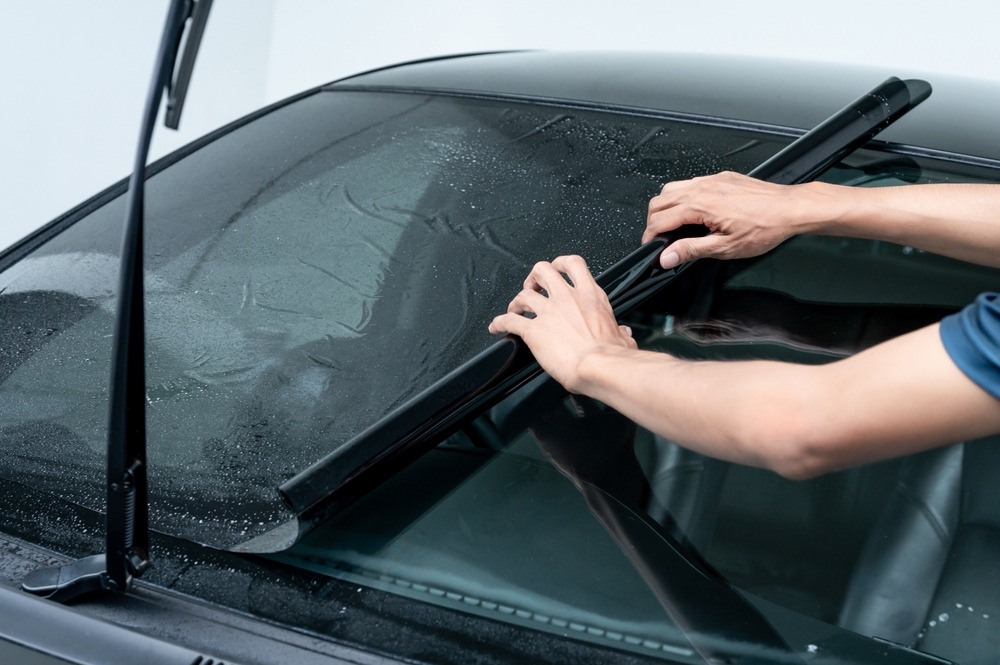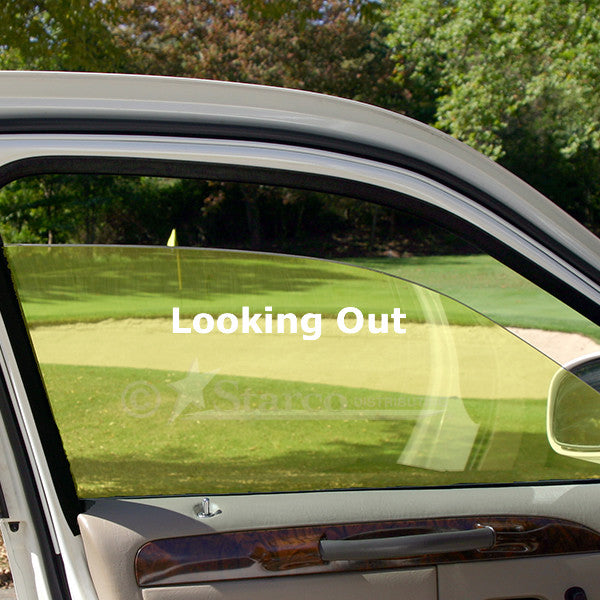Improve Your Vehicle's Look with Specialist window tinting Services
Improve Your Vehicle's Look with Specialist window tinting Services
Blog Article
Discovering the Various Kinds Of Window Tint for Cars and Their Benefits

Colored Home Window Color
Colored home window tint is a popular choice amongst car proprietors looking for to improve privacy and reduce glare while maintaining a stylish look. This kind of tint is created by incorporating dye into the glue layer, which is after that related to the home windows of the car. The primary charm of dyed window tint exists in its ability to provide a visually pleasing appearance without giving up performance.
One of one of the most considerable advantages of colored home window color is its capacity to block dangerous UV rays, aiding to shield both guests and the automobile's interior from sun damages. Furthermore, this tint efficiently reduces glow, adding to an extra comfortable driving experience, especially during intense daylight conditions. The deepening of home window color additionally adds a layer of personal privacy, making it much more tough for outsiders to see inside the vehicle.
Nonetheless, it is necessary to keep in mind that while dyed window color provides countless benefits, it might not provide as much warm rejection as other types of colors. Its long life can be impacted by direct exposure to extended sunlight, potentially leading to fading over time. In general, dyed home window tint continues to be a popular choice for those focusing on aesthetic appeals and basic sun protection.
Metalized Home Window Color
Metalized home window tint represents an innovative option for car owners aiming to enhance both efficiency and looks. This kind of tint incorporates tiny metal fragments that mirror sunshine, supplying a variety of benefits that interest several vehicle owners. Among the main advantages of metalized home window tint is its superior heat rejection capabilities, which can considerably minimize the interior temperature of an automobile. This not only improves comfort for passengers yet additionally minimizes the tons on the car's air conditioning system, possibly improving gas performance.
Moreover, metalized tints supply boosted longevity contrasted to dyed films, making them immune to fading and damaging. This long life guarantees that the color preserves its efficiency and appearance with time, offering long-lasting worth.
Additionally, metalized home window tint can boost personal privacy and safety and security by making it harder for outsiders to see inside the car. The reflective high quality of the tint can likewise discourage possible burglary, as belongings are much less noticeable (window tinting). While it might disrupt some electronic signals, such as GPS or cellular phone function, the overall advantages make metalized window color a compelling option for many vehicle owners
Ceramic Home Window Tint
Providing advanced modern technology and unrivaled performance, ceramic home window color has actually emerged as a leading option for critical cars and truck proprietors. This innovative movie is composed of innovative ceramic particles that provide considerable warmth rejection while preserving quality and visibility. Unlike conventional tints, ceramic home window tint does not rely on metal or dye, which can hinder electronic signals from gadgets such as GPS and mobile phone.
Among the standout benefits of ceramic home window tint is its phenomenal UV security. It obstructs up to 99% of dangerous ultraviolet rays, thereby securing both the vehicle's interior and its residents from sun damage. Additionally, this kind of color enhances personal privacy without compromising exposure, making it a functional alternative for day-to-day vehicle drivers and deluxe cars alike.
Ceramic window tint also boasts sturdiness; it is resistant to fading and scraping, making sure durable efficiency. Additionally, its non-reflective nature indicates it does not create glow, adding to more secure motoring conditions. For those looking for a costs tint option that incorporates visual appeals with capability, ceramic window color stands out as an exceptional option, supplying improved comfort and protection on the roadway
Carbon Window Color
When it involves home window tinting options, carbon window tint has gotten popularity for its blend of efficiency and affordability. This type of color is composed of carbon fragments, which provide an unique matte surface that enhances the visual charm of lorries. Among the primary advantages of carbon window color is its ability to block a significant quantity of hazardous UV rays, securing both the automobile's interior and its residents from skin damage and fading.
Additionally, carbon window tint uses exceptional heat rejection residential properties, lowering the need for excessive a/c and enhancing gas efficiency. Unlike colored colors, carbon tints do not fade with time, maintaining their performance and look for many years. This toughness makes them a useful option for cars and truck proprietors seeking lasting value.
Moreover, this link carbon window color is non-metalized, which indicates it does not interfere with digital signals, making it suitable for lorries geared up with general practitioner, Bluetooth, and various other wireless modern technologies. The balance of price, efficiency, and visual appeal has developed carbon home window tint as a preferred option for many car owners. Inevitably, it acts as a trustworthy remedy for those seeking to enhance convenience while making sure design.
Factory Tint
Factory color, likewise called OEM tint, refers to the tinting that is related to automobile windows throughout the manufacturing procedure. This kind of color is usually incorporated right into the glass itself, offering an uniform appearance and regular degrees of shielding throughout all home windows. The primary function of factory tint is to minimize glare and enhance passenger comfort while providing a degree of UV protection.

While manufacturing facility color provides standard advantages, it might not offer the very same level of warm denial or personal privacy as higher-grade aftermarket colors. Car owners looking for enhanced performance might consider extra tinting options, while still valuing the aesthetic allure and capability manufacturing facility tint supplies.
Conclusion

Nonetheless, it is essential to note that while colored home window color supplies numerous benefits, it might not offer as much warmth rejection as other kinds of tints. For those looking for a premium color option that integrates aesthetic appeals with capability, ceramic window color stands out as a premium selection, Click This Link supplying boosted convenience and security on the road.
When it comes to home window tinting choices, carbon home window color has actually acquired popularity for its mix of performance and cost.Manufacturing facility color, likewise understood as OEM color, refers to the tinting that is used to car windows throughout the manufacturing procedure. The specific degree of color can differ depending on the automobile manufacturer and design, with some lorries including much more considerable tint on back home windows than on front windows.
Report this page